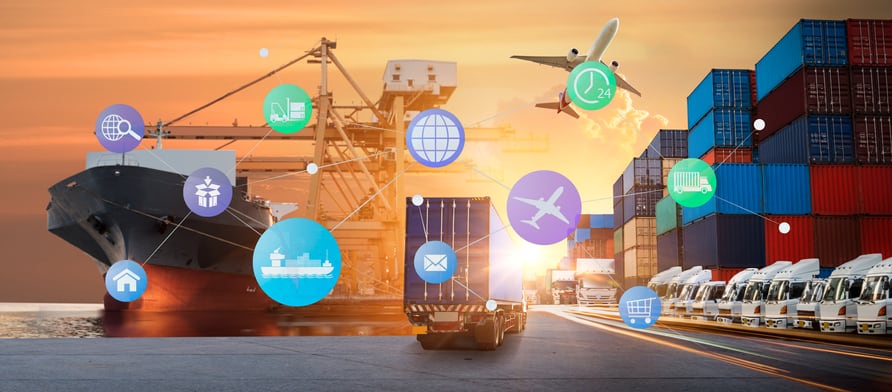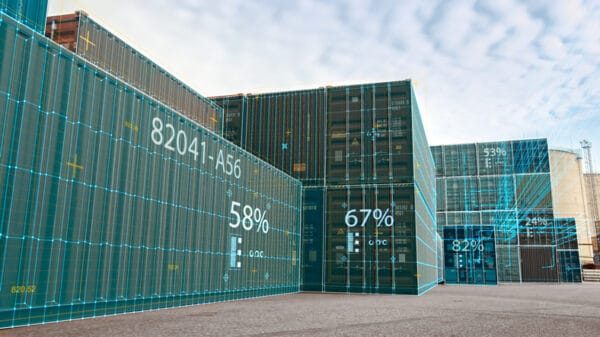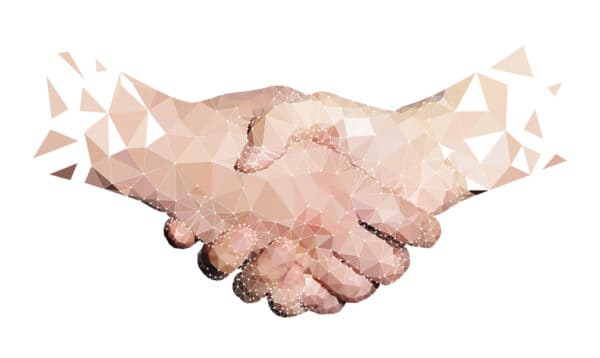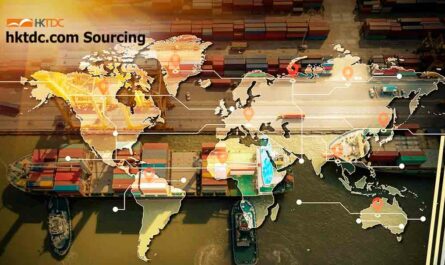There is virtually no company or industry that is not affected by the current challenges in the global supply chain. The pain that has been caused by what we had to endure in the past few years is unprecedented.
Today's Supply Chain Situation

In the industrial world, no internal organization has been more affected by these disruptions than the supply chain departments. The reflection of all the events that happened has caused an irreversible paradigm shift across the board.
Closed borders, lack of drivers, clogged ports, trade restrictions, and stuck gargantuan ships are a few of the reasons that have put Supply Chain Management on the radar more than ever before. “Supply chain problems” have become a household conversation when talking about why your kid’s teddy bear may not arrive on time for Christmas.
Executives’ focus on supply chain and logistics is at its peak due to the recent disruptions of the last five years. FT calls this shift going from “Just in Time” to “Just In Case”1, where the focus is increasingly on supply chain resilience rather than low-cost assurance due to the lost sales and slipping customer loyalty. Carefully optimized lean supply chains with the lowest overheads possible have been strained and broken up during the pandemic.
3 Areas of The Supply Chain Shifts
The so-called paradigm shift happening across all sectors concern not just geographical shifts but also the “ways of working”. Collaboration across relevant stakeholders is becoming a crucial focal point in developing supply chain resilience and the ability to react to disruptions due to catastrophic network failures. I will be covering three areas where I feel the supply chain shifts have accelerated in the past few years:
1.Geography

Geography has played a twofold challenge for almost all consumer product companies.
A. Global sourcing footprint
Source country rationalization and consolidation have been growing within consumer product industries in recent years. Some have been considering near-shoring while others bring in-house or in-country for products that are of higher value. Smaller batches of products with more customized and trendy elements of the moment have been challenging companies to reduce the commercialization lead times to record lows. Tariffs and geopolitical challenges had already pushed companies to look for alternatives for key supplies. Bakertilly reports “…according to the U.S. Census Bureau, from 2018 to 2019, imports of manufactured goods from China declined by about $90 billion, a 17% drop. U.S. manufacturing imports from Mexico increased by $13 billion4.”
However, when you think of the “network effect” of China, this is still not a significant drop. Network Effect in the supply chain is the immense exponential value created by a player when more stakeholders are added to the system and benefit from the value (benefit gained by an existing stakeholder for each new user that joins the network). In this case, China’s low-cost production and high freight channel capacity over the past 20 years have infused into every aspect of global consumer product supply chains. Just look at the chip shortage that has been happening in the last two years. The shortage pushed chip prices over 30%, due to the pandemic closures and port congestions in the country. China is still the world’s factory, so the relationship must be carefully attended to. Moving production across countries is also not as easy as many might think. Aside from the capital costs of building factories or partnerships, getting the production up to the productivity and quality levels that your company has enjoyed previously, can take up to a year to refine in the new geography.
Sourcing and design offices are also moving around to be closer to the manufacturing countries for nearshoring opportunities. In early 2021, VF corporation moved most of its sourcing and supply chain operations to Singapore to be closer to its supplier base in South East Asia. The trend of decision-making teams moving closer to the production areas will continue as the new global manufacturing maps are redrawn. Procurement and sourcing organizations must be up to date with the latest trade restrictions, haulage fees, and rapidly changing tax and anti-dumping duties when setting up new supply chain routes.
B. Network and sales operations
Buffer stock placement or lack of have also contributed to geographical and network supply deficiencies. Maersk CEO Søren Skou has said, in a recent interview, “Many companies did not have sufficient buffer stock to deal with disruption. And for that reason, they lost sales.”3 We now operate in a world where logistics and distribution functions have to act as one with raw material and finished goods planning. This requires dynamic and flexible supply chain networks that can transfer goods and acquire extra capacity both in manufacturing and warehousing. To prove this point one can just look at the container crises at the beginning of the pandemic when factories were churning products at full capacity while retail shelves stayed empty. Corporations have been focused on just-in-time orders and delivery and have disregarded the need for risk-accounted safety stock building at regional and sales channel levels. I’m sure the finance executives who normally looked at money tied to stock as a deadly sin were kicking themselves when container prices soared to 5x – 10x of pre-pandemic levels – and that is IF you can find a container! Surely, such events (like pandemic and wars) were unprecedented but doesn’t guarantee they (or some version of them) won’t happen again.
Retailers and sourcing specialists need to keep abreast of developing news. Later this year, Pacific Maritime Association and the International Longshore and Warehouse Union contracts will be expiring (June 30), and the hard negotiations are expected to cause delays and potential walkouts in the busiest time of the year. In 2014, negotiations only started a month before the expiry and lasted for 10 months, during when work greatly deteriorated and
crane moves fell by 70% of daily capacity. Companies need to plan for these types of disruptions and other force majeure events.
2.Digitization

A recent study done by ToolsGroup and the Council of Supply Chain Management Professionals (CSCMP) has found that “only 3% of companies experienced no COVID-related business impact, and 42% of organizations say the pandemic has accelerated their digitization plans. Additionally, the majority (90%) are somewhere along the digital journey, but talent deficits threaten to slow progress, with 42% of respondents saying they are handing staff/skills shortages poorly or very poorly”5. Digitization of supply chain and internal operations is no longer a matter of “if” but “when”.
The digital transformation that is aimed at creating value for the company aims at two major goals:
· Automation of certain functions to create labor efficiencies: Redesign processes to take our redundant work and limit deviation from the standard ways of working. This would unlock cost savings, and material savings, and help with cost avoidance.
· Visibility through digital replication of physical processes: Often legacy procedures done manually, are mapped out in operator’s heads and potential shortcuts that override real-time transparent information are rampant. Creating visibility through a digital twin of your operation would help you reduce waste, shrinkage, improve loss prevention, bring process measurement while creating metrics and KPIs for better measurement of productivity and create benchmarks.
Companies that use planning and network optimization along with action-biased control towers will be much better fitted to sail through disruptions if they have capable and agile teams that can make swift decisions. Digital tools automate and shorten the time to make decisions when survival depends on speed, sending data, and decisions across supply chain stakeholders. Visibility of product flow and the corresponding inventory policies would help your sales teams and operations make insightful decisions to minimize the service levels.
3.Collaboration

Vendor collaboration and strategic advantages from these partnerships can both bring savings and a competitive edge into the future for product design and speed to market. Imagine a multinational electronics company’s millions of dollars’ worth of products being stuck at one location due to quality inspectors not being able to travel into the country to do the final checks before the large bulk shipment. Entrusting your partner with internal inspections, measuring, and collecting process metrics can be a sure way to reduce the lead time and interdependencies across stakeholders. You will need to deploy teams to do this or create strategic partnerships within the origin country – an agent who can move things for you under your guidance and governance.
According to McKinsey, companies that regularly innovate and collaborate with their suppliers enjoy 2x on EBIT growth year on year versus the ones that don’t. Collaboration happens through creating integrated processes that enable supply-chain optimization, such as “redesigning processes together to reduce waste and redundant effort, or jointly purchasing raw materials… Or they can collaborate in forecasting, planning, and capacity management—thereby improving service levels, mitigating risks, and strengthening the combined supply chain.”6
The good news for companies is vendors are ok with it! In a recent PwC survey, nearly 90% of respondents said that they believed that the top management at their key vendors was willing and able to collaborate.7
Collaboration with your suppliers and relying on product development expertise can also win you the out-of-stock game. Companies can create shortlisted items that are easier to procure and ship that be substituted through demand shaping; the operational supply chain management strategy where a company uses tactics such as price incentives, cost modifications and product substitutions to entice customers to purchase specific items.8
So next time you talk about your company’s supply chain strategy consider doing more constructive changes than just considering shifting to a new country or a supplier. You will need to have tough conversations that go against the conventional supply chain wisdom because we live in unprecedented times.
https://www.ft.com/content/8a7cdc0d-99aa-4ef6-ba9a-fd1a1180dc82
https://sloanreview.mit.edu/article/how-covid-19-will-change-the-geography-of-competition/
https://www.imd.org/news/updates/Trade-to-rebound-and-digitisation-to-accelerate-predicts-Maersk-CEO/
https://www.bakertilly.com/insights/supply-chain-pivots-can-support-organization-resiliency
https://www.toolsgroup.com/news/study-shows-74-percent-of-digital-supply-chain-planning-transformations-influenced-by-covid/
https://www.mckinsey.com/business-functions/operations/our-insights/taking-supplier-collaboration-to-the-next-level
https://www.gatekeeperhq.com/blog/collaboration-with-vendors-the-key-to-continuous-improvement
https://www.techtarget.com/searchcio/definition/demand-shaping#:~:text=Demand%20shaping%20is%20an%20operational,customers%20to%20purchase%20specific%20items.

Cem Yurdum
Global Supply Chain Expert
Cem Yurdum is a global supply chain executive who has spent most of his career transforming the supply chain and manufacturing across the world. He has worked for some of the largest companies, e.g. Lowe’s, Kraft Foods, and Li & Fung. He currently works for Coca-Cola Icecek in Turkey, transforming logistics and supply chain operations for the Coca-Cola network across 11 countries. He is also the founder of Aqua Nomad, the sustainable water sports apparel brand made from upcycled sea plastic.
Leading transformational programs for international organisations and teams, Yurdum
delivers productivity and process improvement initiatives with a focus on increasing value around people, processes, and systems capabilities. His experience brings industry insights into the end-to-end supply chains for apparel and FMCG markets.



















